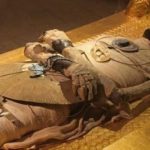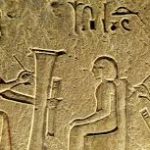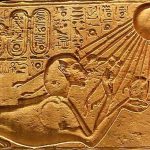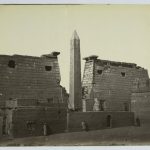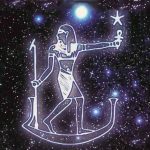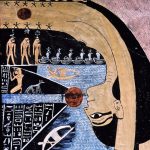Like many ancient peoples, the Egyptians studied the night sky, taking measurements from the stars to accurately align their pyramids and sun temples with the earth’s four cardinal points. Taking sightings of the Great Bear and Orion with an instrument called a merkhet (similar to an astrolabe), astronomer-priests marked out the foundations of buildings with astonishing accuracy.
The Great Pyramid at Giza provides an example. This remarkable building has a footprint of over 13 acres and consists of approximately 6.5 million limestone blocks. Its four sides are accurately aligned to face north, east, south, and west, with an error of less than half a degree. They are also virtually identical in length, with less than a 20 cm (8 inch) variance between one side and another.
The Egyptians believed that the gods lived in the Duat, the kingdom of Osiris. It is located in the region of the sky where Orion and Sirius rise heliacally just ahead of the sun at dawn on the summer solstice. Some Egyptologists have proposed that the Giza plaza, with its three large pyramids, the Sphinx and the Nile, is a mirror reflection of the Duat. The three pyramids represent the three stars in the belt of Orion, the Sphinx corresponds to the constellation Leo, and the Nile corresponds to the Milky Way. The concept of creating a sacred landscape on earth that reflects the night sky is not uncommon in other ancient cultures. By building pyramids, temples, and tombs aligned with stars and the earth’s cardinal points, ancient people venerated their gods, bringing divine energy to the earth, which prevented the world from falling into chaos.



